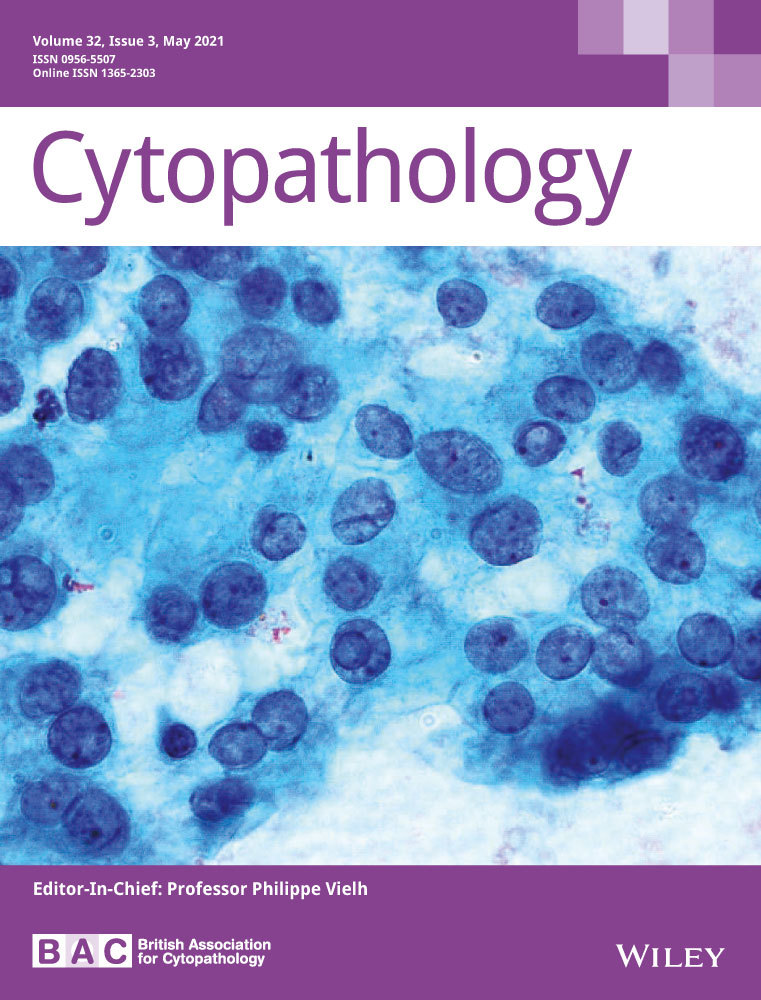Diagnostic utility of fine needle aspiration cytology and core biopsy histopathology with or without immunohistochemical staining in the subtyping of the non-small cell lung carcinomas: Experience from an academic centre in Turkey
Abstract
Introduction
This retrospective morphological study compared the results of fine needle aspiration (FNA) cytology, haematoxylin-eosin (HE)-stained samples and immunohistochemical (IHC)-stained core needle biopsy (CNB) histology samples for primary non-small cell lung cancer (NSCLC) subtyping. We assessed the diagnostic utility of these methods to investigate the contribution of each method to NSCLC subtyping. We also identified the point at which NSCLC subtyping could be performed using histomorphology alone without IHC.
Methodology
Concurrent FNA and CNB specimens obtained via a single computed tomography-guided procedure and diagnosed as NSCLC in the Pathology Department of our university within 3 years were reviewed. The results of FNA samples, HE-stained biopsies and IHC-stained biopsies were compared according to subtype.
Results
A total of 141 subjects were enrolled in the study. For subtyping, FNA provided an accurate diagnosis in 70 (55.1%) of 127 eligible subjects after the exclusion of 14 cases determined as not otherwise specified. CNB histology without IHC achieved a diagnosis in 53 (41.7%) of 127 subjects, which was a significant difference (P < .05). The compatibility rate between HE-stained biopsy samples and IHC-stained biopsy samples was 41.7% (53/127).
Conclusion
The diagnosis rates achieved using FNA, HE-stained CNB samples and IHC-stained CNB samples were 54.6% (77/141), 37.6% (53/141) and 90.1% (127/141), respectively. The subtype was identified in 55.1% of the subjects evaluated using FNA and 41.7% of subjects assessed using HE-stained biopsy samples without IHC. FNA provided a better result for squamous cell carcinoma than adenocarcinoma (55.1% vs 47.6%), but the diagnosing of adenocarcinoma and squamous cell carcinoma using HE-stained biopsy samples was similar (42% vs 41.7%).
Abstract
Image-guided lung biopsy histology with immunostaining is current practice for accurate NSCLC subtyping and molecular assessment for initiation of personalised targeted therapy. In this series, accurate subtyping of NSCLC was achieved by FNA in 55.1% and by HE stained biopsy in 41.7% of cases. In approximately 60% of biopsies, it was not possible to achieve accurate subtyping without immunohistochemistry. Combined lung FNA/core biopsy enhanced the diagnostic value.
CONFLICT OF INTEREST
The authors declare no potential conflicts of interest. The authors have no disclosure of grants or other funding.
Open Research
Data Availability Statement
The data that support the findings of this study are available from the corresponding author upon reasonable request.




